These 7 Brands Have Used BigCommerce to Level Up Their Businesses

Standing out in today’s ecommerce landscape is like walking uphill through treacle. The ease of setting up shop on marketplaces like Amazon means everyone and their dog seems to be giving the whole selling online thing a go.
But standing out goes a whole lot further than uploading your products and hoping you’ve got the edge over your competitors, which is why a lot of successful retailers are choosing to create their own dedicated online stores.
In the past, this kind of venture was pricey, but the advent of ecommerce platforms has made it a whole lot easier and far, far cheaper.
So why build your own online store instead of taking the easy route?
The answer is simple: your own online store is the one chance you have to prove your brand value to customers and give them a reason to keep buying direct from your site rather than elsewhere.
But doesn’t that require a ton of work, complicated coding skills, and a keen eye for design?
Yes – but platform builders like BigCommerce make all of those steps a walk in the park thanks to eye-catching templates, pre-coded features, and useful integrations.
It might just be the edge you need. According to a study by Digital Commerce 360, people who choose to buy from branded websites over Amazon do so because:
- They want a sense of belonging
- They seek knowledgeable staff members
- They want easy returns policies
To get your creative juices flowing, here’s some inspiration from brands that are rocking it with their BigCommerce sites.
1. SkullCandy
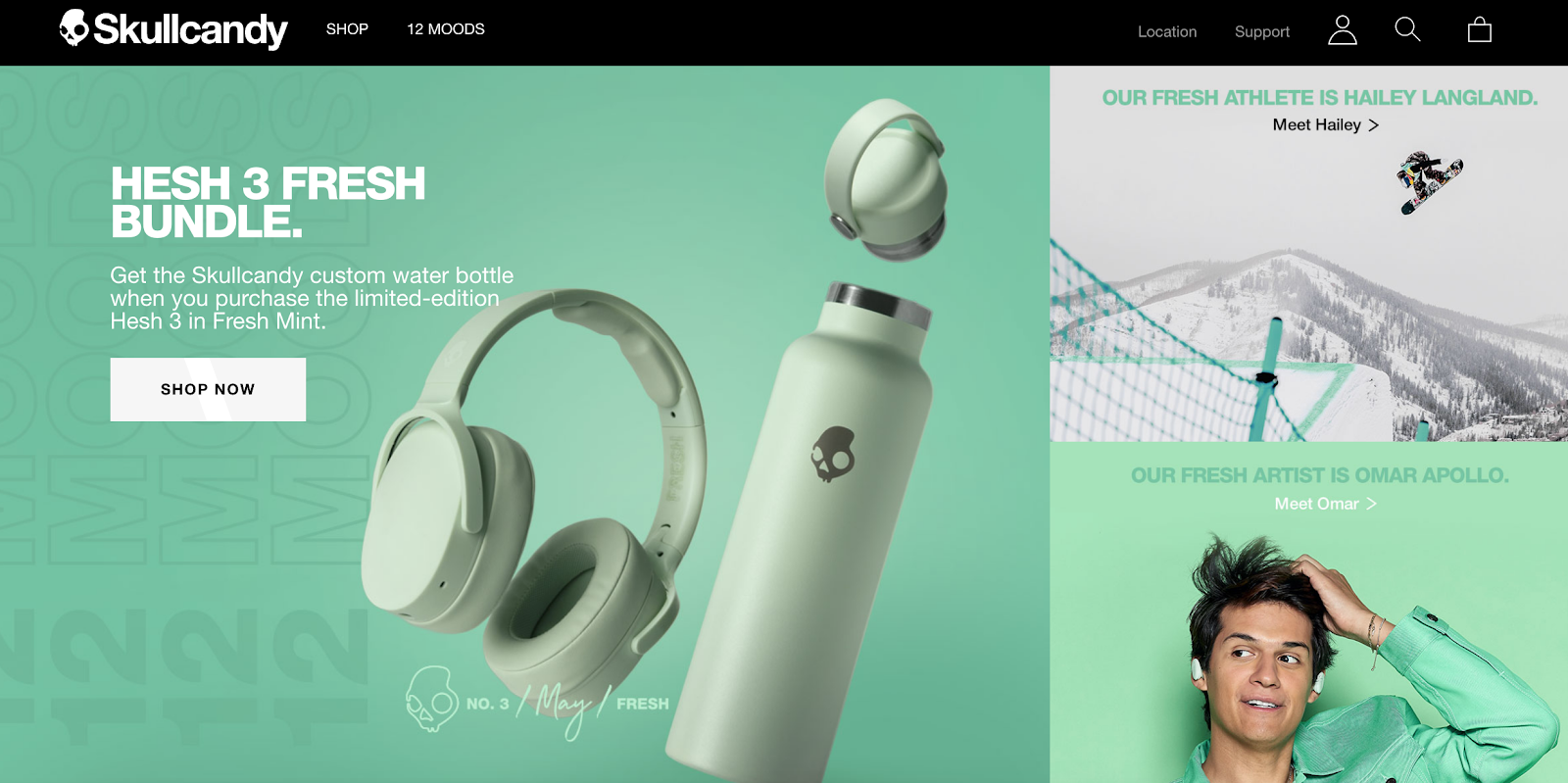
Skullcandy, a disruptive brand that sells headphones, earbuds, and music players, used the BigCommerce platform to launch seven sites. These were made up of one US site, two Canadian sites, and four European sites, all of which covered three languages and four currencies – and they launched them all in just six months.
This is no easy feat, but the built-in features of BigCommerce made it possible. Rather than having to upload their products seven times for each site, they could just upload them once and send them out to each version.
In the first month after the launch, they doubled their conversion rate and went on to win an award for the Best New Website Design.
So why is Skullcandy rocking it?
Did we mention that they doubled their conversion rates once they started using BigCommerce?
When you take a look at the sleek website design and smooth user journey, you can see why. The site’s bold colours and striking branding helps new visitors gain a quick understanding of what Skullcandy is all about and gives an instant glimpse into the high quality of the products.
BigCommerce has allowed Skullcandy to completely customise its owned store to reflect the community-inspired, cult-like image the the brand has nurtured.
Taking this further, they have created a mobile-first experience that aligns with what their typical customers want and their typical behaviour when buying online.
“Younger consumers are completely entrenched in technology and have a million touchpoints at their fingertips,” says Kinsey Butler, Skullcandy’s Manager of Ecommerce. “The ability to meet them where they are, to speak their language, and to be authentic in a way that actually converts is really important to us. BigCommerce makes it easy to integrate with Facebook and Instagram, giving us additional valuable sales channels.”
2. Bliss World
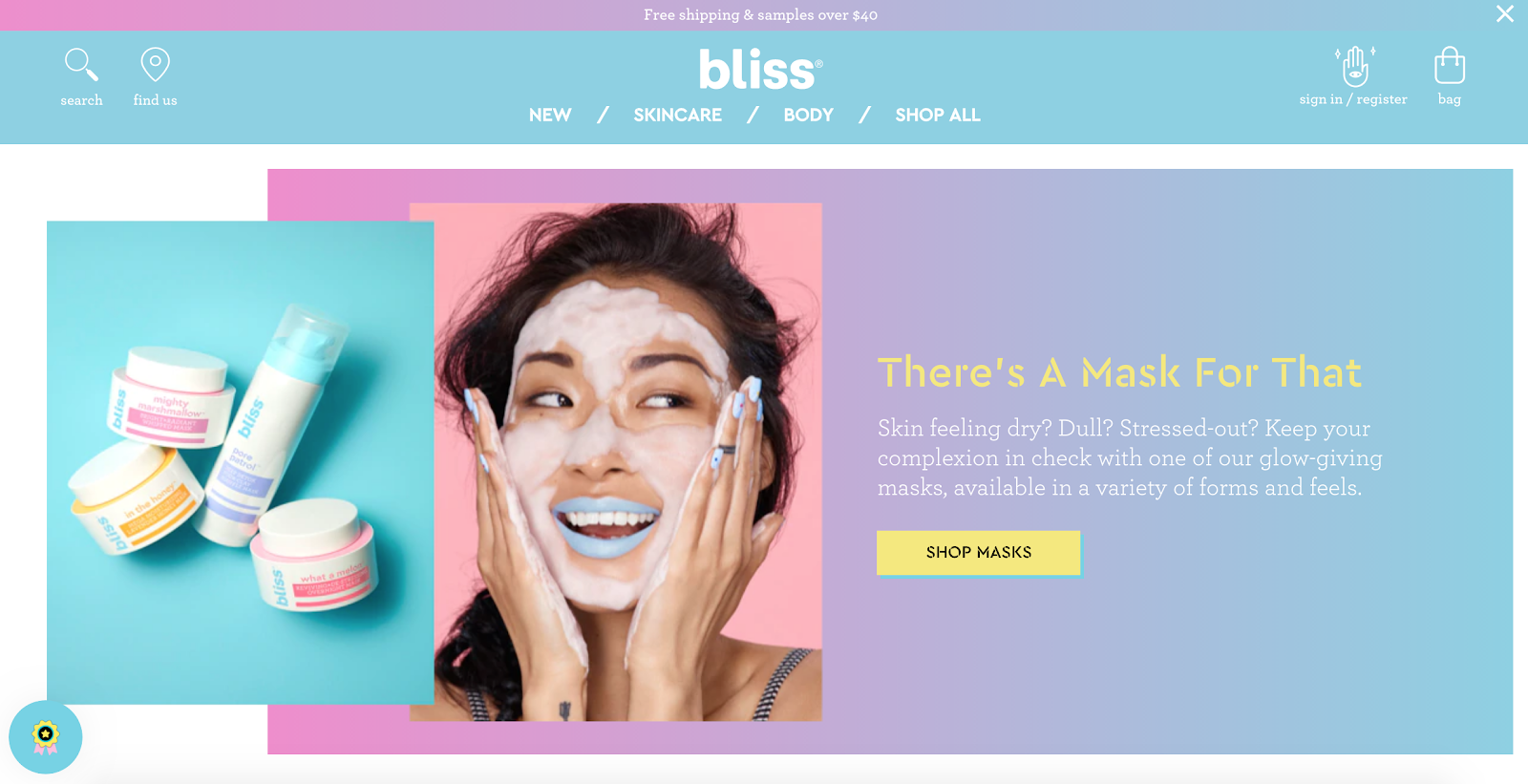
Pastel-perfect brand Bliss World (or just Bliss) elbowed its way to the top of the online spa industry in the 90s and has exploded in popularity since then.
Its whole ethos focuses on matching skin types with the right products, so it heavily relies on personalisation and creating individual experiences – something that isn’t particularly easy to do on a generic marketplace platform.
To maintain its position in the industry, it turned to BigCommerce to set up shop.
Through the expansive customisation features, the brand has managed to create a colourful home that’s so on-brand it almost hurts.
They are able to separate different skincare products into the relevant skin type sections and pull over any that are a match for multiple skin types.
But perhaps the biggest draw of buying from the Bliss website rather than another platform is the unique shipping options.
Shoppers who buy direct can tap into special shipping offers and surprise gifts – something that wouldn’t be possible via marketplaces.
According to The Future of Retail report, 79% of consumers said that free shipping would make them more likely to shop online.
While Bliss doesn’t offer completely free shipping, we’re willing to bet the surprise gifts and shipping offers easily sway shoppers who are on the fence.
3. Speed Addicts
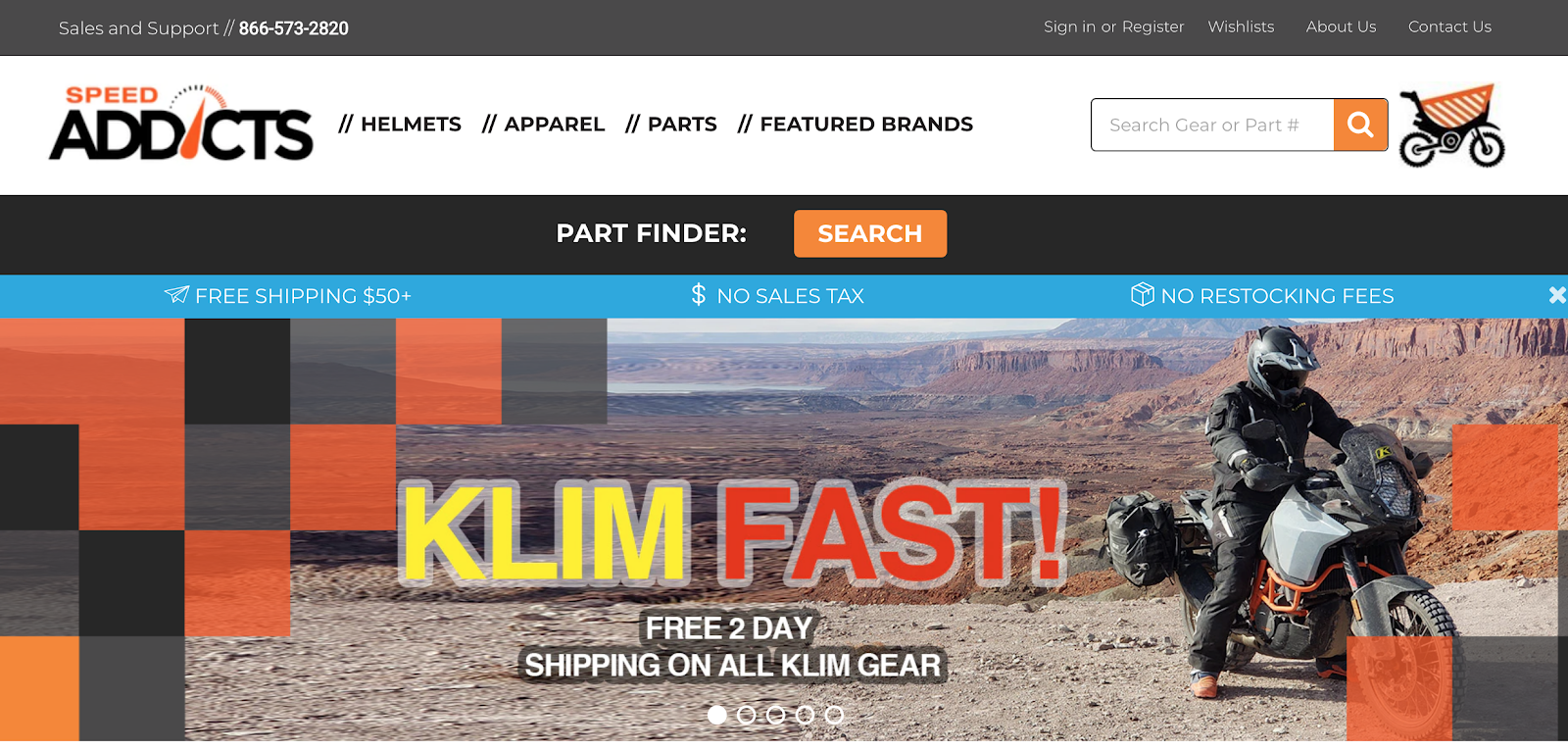
Speed Addicts started life in the dorm room of two keen motorcyclists.
It was initially a hobby business that sold motorcycle parts on eBay but, as demand increased, the brand began selling new parts as well.
Over the years, the founders tried to create several versions of their own website, but found it was costly selling automotive parts that were slammed with certain regulations – until they stumbled on BigCommerce.
“Speed Addicts now has a website with every feature we could have wanted, all while staying within our budget,” says founder Schad VanLeeuwen. “The site we have today would have cost $50-100,000 just a few years ago.”
Now, as well as having a robust, functioning, and engaging site that hasn’t broken the bank, Speed Addicts has also integrated some key BigCommerce features to make the user experience far more enjoyable.
They now have a “shop by bike” feature that was impossible to implement on other versions of the site, and their 360 degree images of their products make the purchasing process a whole lot more compelling.
4. Andie Swim
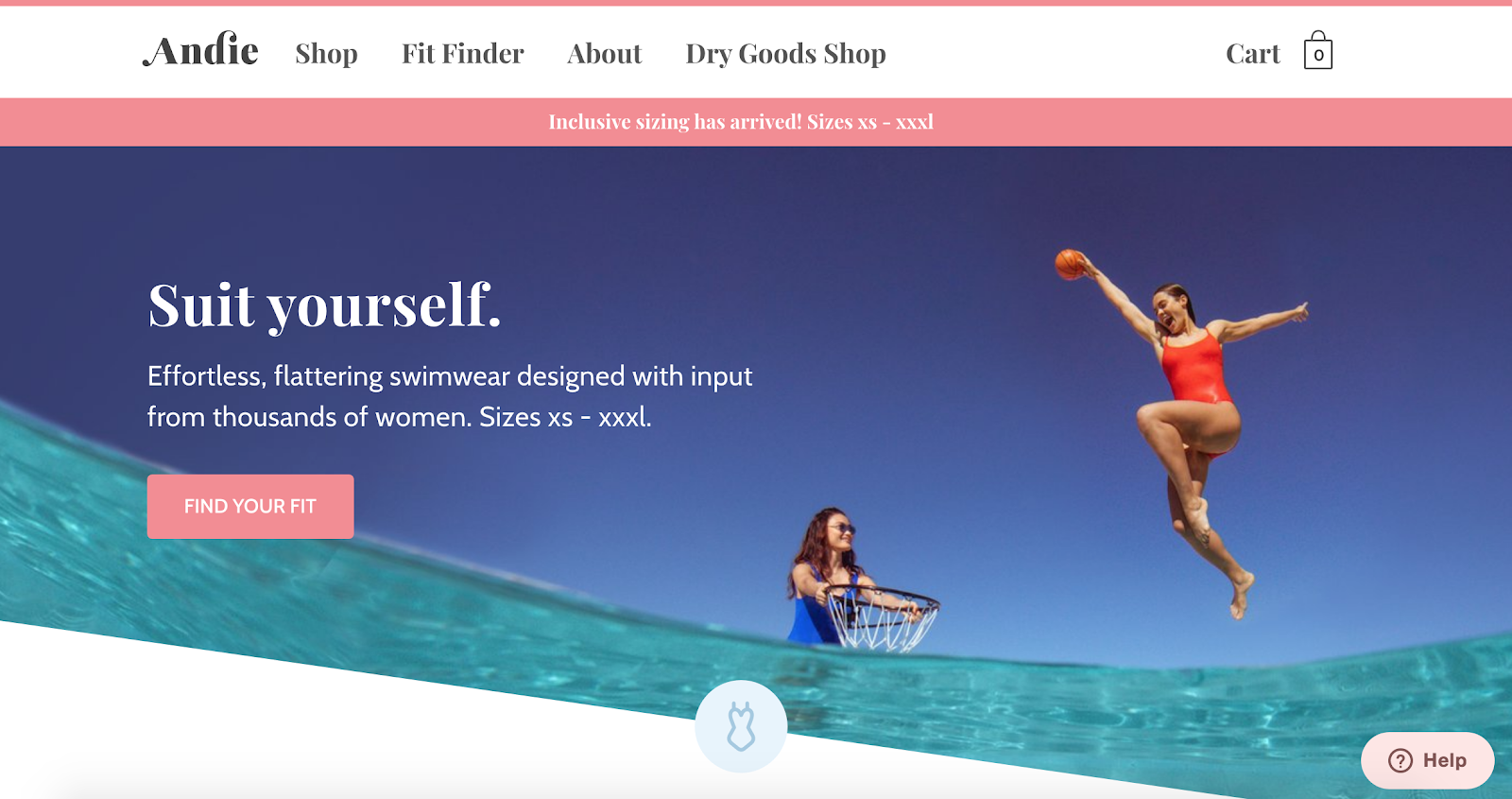
Andie Swim has revolutionised the way women can buy swimwear, taking out the embarrassment of trying on cossies in-store and instead allowing shoppers to trial items in the comfort of their own home.
The unique business model – where shoppers have two weeks to try a suit on and send it back before they’re charged – required a unique eCommerce set up. Most notably, the brand needed a platform builder that would integrate the specific payment solution they needed.
And BigCommerce was the only platform that seemed to provide the desired option.
“We needed to be able to hold the credit card for at least two weeks,” says founder Melanie Travis. “Personally, I wanted to hold the card for more like three to four weeks so that we wouldn’t have to punish the customer and charge them if we hadn’t gotten it back by a certain day.”
This also meant that shipping had to be absolutely seamless and quick to make the most of the amount of time the customer’s card was on hold for.
Because of its vast integration options, BigCommerce offered both the right payment solution and the ability to partner with efficient shipping companies.
Andie Swim’s BigCommerce website not only showcases the quality of the brand, but it also creates a sense of community around it thanks to a heavy emphasis on social elements like a featured Instagram feed.
5. John Paul Mitchell Systems
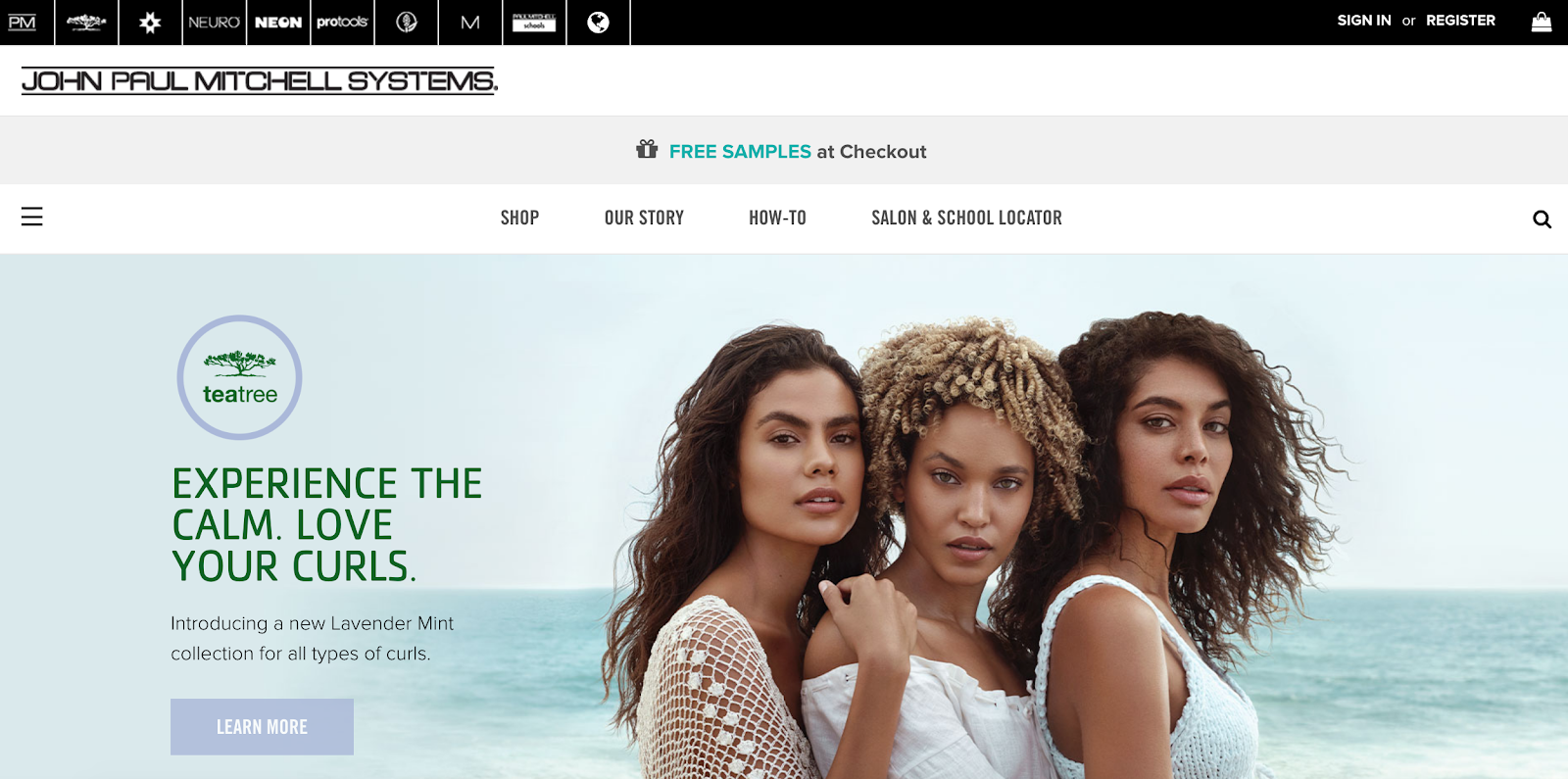
John Paul Mitchell Systems sells products to salons as well as customers. After deciding to implement a commission program that handed a slice of the revenue pie to salons that helped sell their goods, they began researching possibly platform builders and settled on BigCommerce.
They used BigCommerce’s built-in coupon codes to setup and run their partner program. Through this model, they shifted more than $2,000,000 in products in just two years through their own site.
“It helped us bypass competitors through direct traffic and professional word of mouth recommendations from stylists around the globe,” the brand noted.
On top of the integrated partner program that would have been tricky on any other platform – particularly a generic marketplace – John Paul Mitchell Systems also provided free samples at checkout to make buying direct more appealing.
6. Yellow

Yellow is the only dedicated B2B seller on this list, but they are making waves with their BigCommerce site. The brand specifically sells professional services and solutions to other businesses but, unlike most other service providers, they do it through an ecommerce format.
Instead of the usual “get in touch for a quote” spiel, clients can purchases services directly from Yellow’s website.
“Yellow is going through a complete digital transformation and bringing a whole new set of services online,” says Tony Hou, Managing Director at Moustache Republic – the company that designed the checkout process for the brand. “Like most businesses their size, the company has a complex set of ecommerce requirements that can’t be solved by out-of-the-box solutions.“We knew the BigCommerce platform had the flexibility to accommodate both the customised single sign-on and checkout experiences Yellow desired without requiring a huge investment.”
This is a great example of a B2B brand utilising the features of BigCommerce to solidify its strong branding, as well as incorporating key customisation elements to show success stories that drive the customer journey.
7. BonBonBon

Bright and beautiful BonBonBon’s site makes the most of the ability to customise practically every element of a BigCommerce template.
Not only do they incorporate big, eye-catching banners, but they also use stories, videos, and blog posts to cement the feeling of community around the brand.
Previous versions of the site were built using different ecommerce platforms, which the brand found incredibly limiting. In fact, the block on being able to add what they wanted to the site started to affect the brand’s revenue.
With the help of BigCommerce integrations and a highly-customisable design, BonBonBon has managed to create a website that’s a work of art in itself (and doesn’t lose out on revenue).
“We have created a funky, user-friendly BigCommerce site that captures the spirit of the BonBonBon product, the Babes Babes Babes (a rad group of ladies keeping hand-u-facturing alive in Detroit), and of course the chocolate,” says the team.
Customise and Conquer With BigCommerce
If setting up your own ecommerce website has you paralysed in fear, just take a look at what these brands have managed to achieve.
Most of them needed a specific feature to keep their business models well-oiled and working and they found the features they needed on BigCommerce.
It’s a scary thought going it alone without the help of a marketplace like Amazon, but with the right tools and systems in place, you might find your business thrives beyond your wildest dreams.
Sign up for a Shiptheory account today to find out how you can level up your shipping game with the smarter shipping software.
Share Article:
